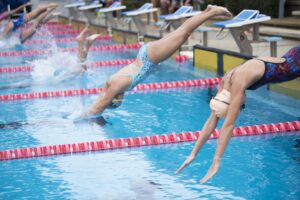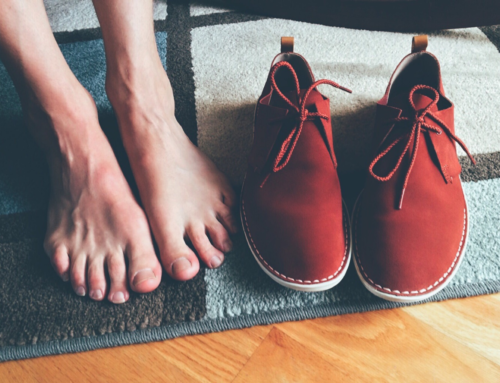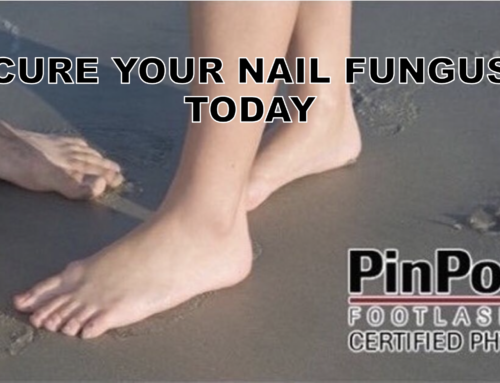Toenail fungus and sports can go hand in hand when getting infected. If you are an athlete, health and fitness are of the utmost importance to you. After all, there is no way for you to reach your peak performance if you are not feeling your best. However, you may be aware, whether it be from other athletes or personal experience, that athletes experience a higher rate of toenail fungus than most other people. What is the reason for this higher prevalence of toenail fungus in athletes?
Toenail Fungus in Athletes
To understand why toenail fungus is prevalent in athletes, it helps to know how toenail fungus develops. Contrary to popular belief, toenail fungus does not originate from the nail itself, but from the nail bed beneath. When there is a crack, cut, or other opening in or around the toenail, fungal spores find their way in and begin multiplying. The fungus feeds on the keratin in the nail, gradually making it thick, brittle, yellow, and sometimes painful.
Gyms, locker rooms, pools, and shared showers all provide the warm, damp environments where fungi thrive. When combined with the small injuries athletes often experience, it creates the perfect storm for infection.

Why Do Athletes Get Toenail Fungus?
Athletes—especially those who play contact sports or run regularly—are at greater risk of toenail fungus due to repeated trauma to their feet. Constant running, cutting, kicking, or jumping puts pressure on toenails. Soccer players, for instance, frequently injure their toenails from kicking, while runners may develop toenail damage from repeated impact inside tight shoes. These small cracks in the nails give fungus the entry point it needs.
Additionally, sweaty socks and shoes provide the ideal breeding ground for fungus. Athletes often spend long hours in closed footwear, which traps moisture and heat. When combined with communal environments like gym showers or yoga studios, it’s easy to see why fungal infections are so common among athletes of all levels—children, adults, and professionals alike.
Symptoms Athletes Should Watch For
Toenail fungus often starts subtly but becomes harder to treat over time. Athletes should pay attention to early warning signs such as:
-
Yellow or white spots under the nail.
-
Thickening or crumbling toenails.
-
A brittle or distorted nail shape.
-
Unpleasant odor from the infected area.
-
Discomfort or pain when wearing shoes.
If untreated, the infection can spread to multiple toenails and even to teammates or family members.
How Toenail Fungus Affects Athletic Performance
While toenail fungus may not seem serious at first, it can interfere with an athlete’s performance. Thick, brittle, or painful nails can make running, cutting, or jumping uncomfortable. In severe cases, athletes may avoid certain activities because of embarrassment or discomfort, which affects both confidence and training consistency. Healthy nails not only look better but also contribute to better overall foot health and mobility.
Prevention Tips for Athletes
Preventing toenail fungus is easier than treating an infection. Athletes can lower their risk by following these tips:
-
Wear moisture-wicking socks and change them after workouts.
-
Rotate shoes to allow time for them to fully dry.
-
Always wear footwear in locker rooms, showers, and around pools.
-
Keep toenails trimmed straight across to reduce cracks or breaks.
-
Disinfect gear such as shoes, socks, and nail clippers regularly.
-
Give feet breathing time by wearing open-toed shoes when possible.
Simple hygiene habits can go a long way in protecting athletes from fungal infections.
Other Treatments vs. Laser Treatment
There are several options available for treating toenail fungus, but most are less effective for athletes who want quick, lasting results.
-
Topical creams and nail polishes – These are easy to use but have very low success rates since they cannot penetrate deep under the nail.
-
Oral antifungal medications – These are stronger but may require months of use and can have side effects such as liver toxicity, making them risky for long-term use.
-
Nail removal – Sometimes suggested, but removing the nail does not kill the fungus on the nail bed and often results in the fungus returning.
The most effective option is laser treatment, which targets the fungus at its source without harming surrounding tissue.
Laser Treatment for Athletes
While toenail fungus won’t go away on its own, it can be treated effectively with the FDA-approved PinPointe laser. This treatment has the highest cure rate on the market, is painless, and requires no downtime. Athletes can resume training immediately after the session, making it ideal for those with demanding schedules.
Our nail doctor in Dallas, TX, recommends this treatment for athletes of all ages, including children. With no side effects and a quick procedure, it allows you to get back to peak performance without the frustration of recurring infections.
Get Back in the Game
If you are an athlete struggling with toenail fungus, don’t let it slow you down. Schedule a free consultation with a doctor at one of our over 160 locations by calling (800) 672-0625, or visit our website for more information. Clear, healthy nails can help restore your confidence and keep you performing at your best.




